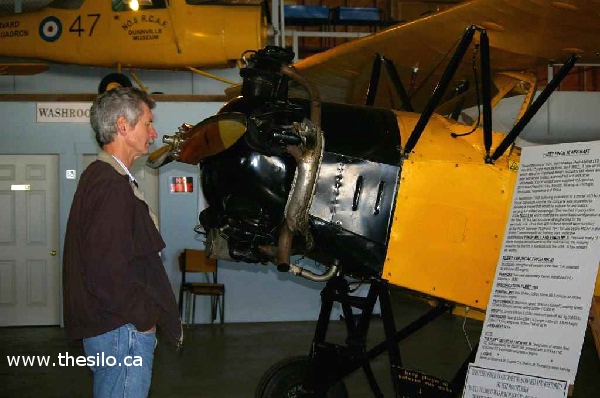Farmers Fly into RCAF Museum Last Fall, on Saturday, November 19th, 30 members and 2 guests of the Ontario Flying Farmers (OFF) paid a return visit to the No. 6 RCAF Dunnville Museum at the Dunnville Airport. Four planes flew in from the Goderich, Kincardine and the Elora area. Poor weather prevented more from flying in, but members drove in from as far as Peterborough. Adrian and Hortense Verburg were the conveners of the event. Adrian was one of the first members of the No. 6 RCAF Dunnville Museum.
Among other objectives, the Ontario Flying Farmers (O.F.F.) promote the practical use of airplanes in agriculture*, and encourage landing strips close to towns and cities. The O.F.F. promote safe flying through continued education and upgrading; help develop the public acceptance of light aircrafts; speak on behalf of farm familites at a national level and cooperate with aviation organizations to promote general aviation through legislation.
*Silo Direct Link to What is Aerial Topdressing?

The No. 6 RCAF Dunnville Museum, which they visited, preserves the memory and artifacts of the No. 6 Service Flying Training School. Part of the British Commonwealth Air Training Plan, the No. 6 was one of 41 such facilities built in Canada during WW II. The Museum, housed in half of Hangar 1, has 4 WW II trainers that still fly as well as extensive displays of course records, photographs, uniforms, training materials, flight log books and other RCAF-related artifacts from WW II.
The Flying Farmers is an international organization that was established in 1945, members are families or individuals interested in flying and or agriculture.
The OFF are celebrating their 50th year in 2011.More information is available by sending email to gc.paisley@hotmail.com Please mention that y0u found this article at The Silo.
Ian Durand is the Vice-President of the No. 6 RCAF Dunnville Museum. The museum is located at the Dunnville Airport at 536 Port Maitland Rd. in Dunnville. Contact information is available at Silo Direct Link to Dunnville Airport

Leave a Reply
You must be logged in to post a comment.